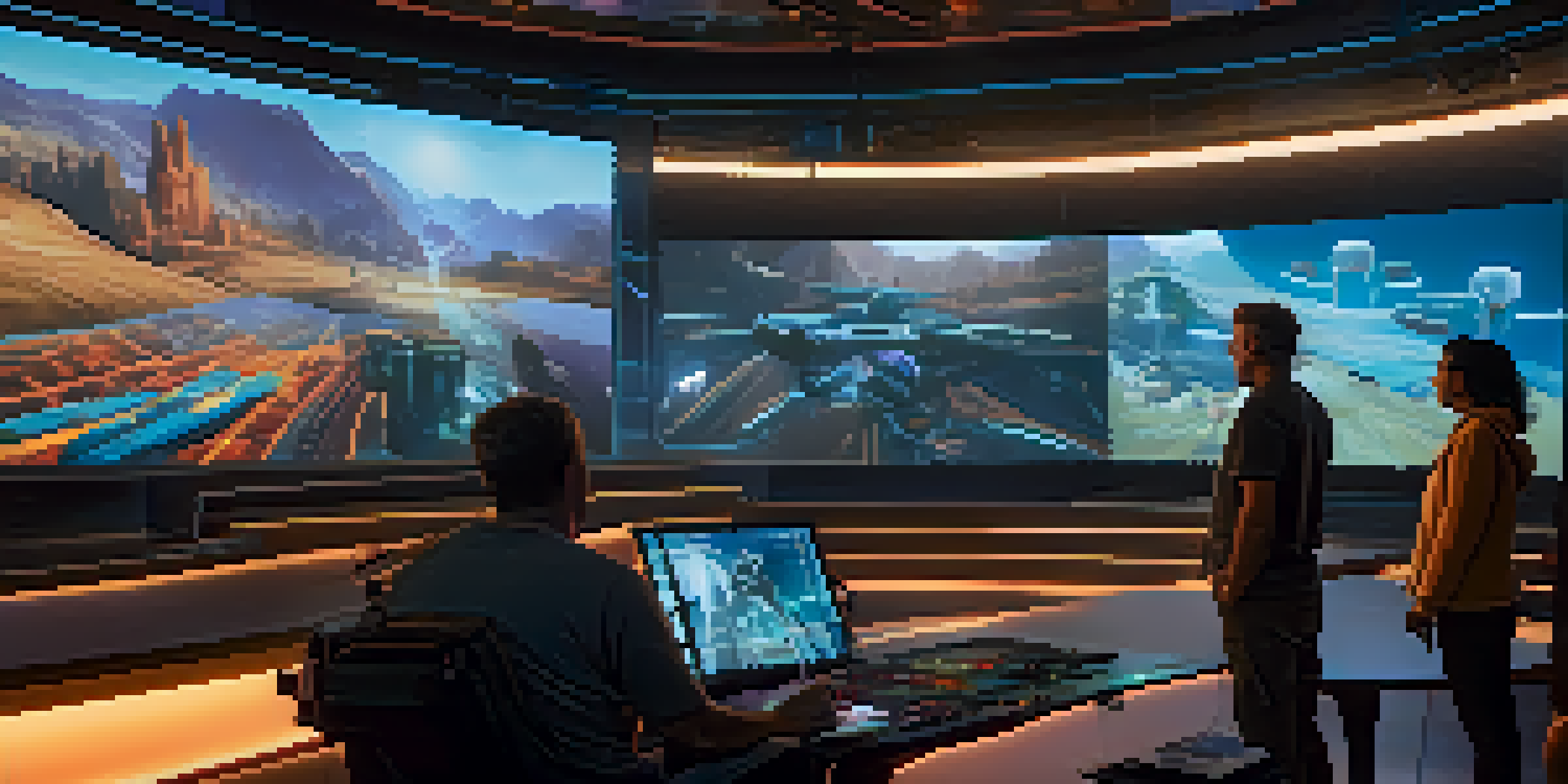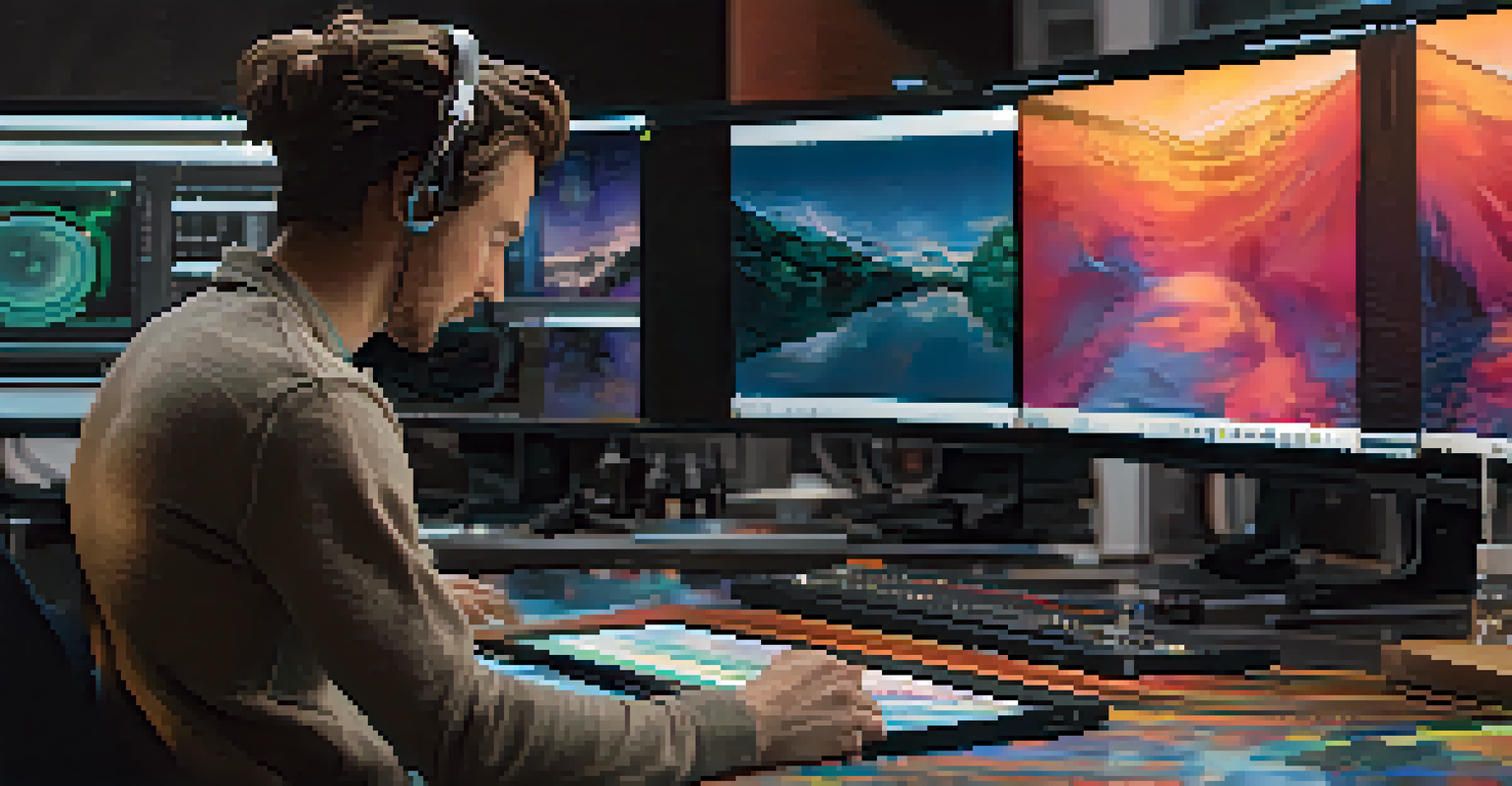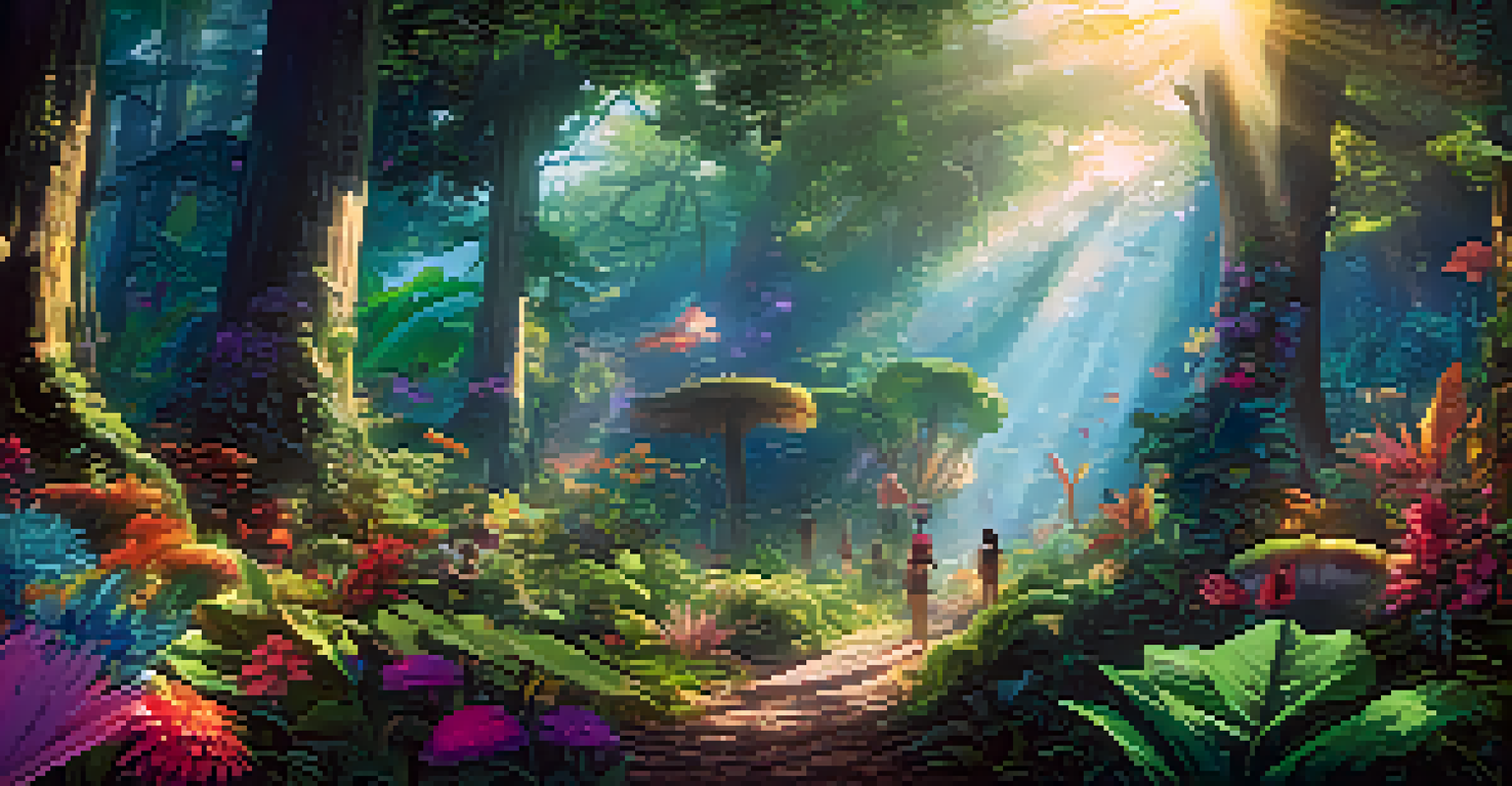The Future of Visual Effects: Trends to Watch in Cinema

The Rise of Real-Time Rendering in Film Production
Real-time rendering is rapidly changing the landscape of visual effects in cinema. This technology allows filmmakers to see their effects in real-time, which streamlines the production process and enhances creativity. Imagine directors being able to visualize complex scenes instantly, making adjustments on the fly instead of waiting hours for renders. As this trend continues, we can expect more interactive storytelling experiences that captivate audiences.
The art of filmmaking is not just about creating visuals; it's about creating an experience that resonates with the audience.
One of the standout examples of real-time rendering is the use of Unreal Engine in productions like 'The Mandalorian.' This innovative approach not only saves time but also reduces costs by minimizing the need for extensive post-production work. The capability to create immersive environments directly on set is a game-changer, allowing actors to perform in rich, detailed backgrounds rather than relying solely on green screens.
As filmmakers embrace this technology, we can anticipate a shift in how stories are told. With the ability to visualize effects in real-time, creators can experiment more freely, leading to unique and unexpected cinematic experiences that push the boundaries of imagination.
Artificial Intelligence: A Game Changer in VFX
Artificial intelligence (AI) is revolutionizing the way visual effects are created and executed. By leveraging machine learning, AI can analyze vast amounts of data and automate repetitive tasks, freeing artists to focus on more creative aspects of their work. This shift not only enhances efficiency but also allows for a higher quality of work, as AI tools can assist in tasks like rotoscoping and motion tracking.

For instance, AI algorithms can generate realistic textures and simulate natural phenomena, making it easier to create lifelike environments. This technology is increasingly used in films and television, resulting in visuals that are more immersive and believable. As AI continues to evolve, we can expect even more sophisticated tools that will redefine the limits of what is possible in VFX.
Real-Time Rendering Revolutionizes Film
Real-time rendering allows filmmakers to visualize effects instantly, streamlining production and enhancing creativity.
The integration of AI in visual effects is not just about automation; it's about collaboration between human creativity and machine precision. This partnership can lead to groundbreaking innovations, allowing filmmakers to realize their creative visions with unprecedented ease and accuracy.
Virtual Reality and Augmented Reality in Cinema
Virtual reality (VR) and augmented reality (AR) are not just for gaming anymore; they are making significant strides in the film industry. These technologies provide immersive experiences that allow audiences to engage with stories in entirely new ways. Imagine watching a film where you can explore the environment from the perspective of the characters or interact with elements of the story in real-time.
Diversity is not a reason for a film, it is a reason to make it better.
Films like 'Ready Player One' have already begun to showcase the potential of VR and AR in storytelling. As these technologies become more accessible, filmmakers will find innovative ways to blend them into traditional narratives, creating multidimensional experiences that captivate viewers. This could lead to a new genre of cinema that prioritizes interactivity and audience participation.
The future of cinema may very well involve a combination of live-action and virtual environments, allowing for storytelling that transcends conventional boundaries. As VR and AR technology continues to develop, we can expect filmmakers to push the envelope, creating experiences that leave audiences not just as viewers but as active participants in the narrative.
The Evolution of CGI: From Pixels to Photorealism
Computer-generated imagery (CGI) has come a long way since its inception, evolving from simple 2D graphics to photorealistic visuals that are almost indistinguishable from reality. This advancement is not just about better graphics; it's about storytelling. The ability to create lifelike characters and environments enhances the emotional connection that audiences feel with the narrative.
Films such as 'Avatar' and 'The Lion King' (2019) have set new standards for CGI, showcasing stunning visuals that enhance the storytelling experience. As technology advances, the line between reality and digital creation continues to blur, allowing filmmakers to explore fantastical worlds that were once unimaginable. This evolution opens up endless possibilities for creativity and innovation in filmmaking.
AI Transforms Visual Effects Creation
Artificial intelligence automates repetitive tasks in visual effects, allowing artists to focus on creative aspects and improving overall quality.
However, the push for photorealism also raises questions about authenticity and the role of human artistry in visual effects. As CGI becomes more advanced, it is essential for creators to balance technological innovation with the emotional depth that comes from human storytelling.
Sustainable Practices in VFX Production
As the film industry becomes increasingly aware of its environmental impact, sustainable practices in visual effects production are gaining traction. Filmmakers are now considering the carbon footprint of their projects, leading to innovative solutions that minimize waste and energy consumption. This shift is not just beneficial for the planet; it also resonates with audiences who value environmentally-friendly practices.
One approach involves using digital tools to reduce the need for physical sets, thereby minimizing resource use. For example, virtual production techniques allow filmmakers to create entire worlds digitally, significantly decreasing the materials needed for physical sets. This not only lessens waste but also allows for greater flexibility in design and execution.
As sustainability continues to influence various industries, the film world is adapting by embracing technologies and methods that prioritize environmental responsibility. This trend is likely to shape the future of visual effects, as audiences increasingly support films that align with their values regarding sustainability.
Diversity and Inclusion in Visual Effects Teams
The conversation around diversity and inclusion is expanding into the realm of visual effects, with an increasing emphasis on representation within VFX teams. A diverse team not only brings various perspectives to the table but also enriches the storytelling process, leading to more authentic and relatable narratives. As the industry evolves, the importance of including voices from different backgrounds becomes clearer.
Many studios are now prioritizing diversity initiatives aimed at fostering a more inclusive environment in visual effects. Programs focused on training underrepresented groups in VFX skills are emerging, creating pathways for diverse talent to enter the industry. This shift is essential for developing stories that resonate with a broader audience, reflecting the diverse world we live in.
Diversity Enhances VFX Storytelling
Increasing diversity in visual effects teams brings varied perspectives that enrich storytelling, leading to more authentic narratives.
As filmmakers and studios embrace this change, we can expect to see a wider array of stories told through the lens of different cultures and experiences. This enhancement not only benefits the industry but also enriches the cinematic landscape, making it more reflective of global society.
The Future Role of VFX Artists: Creators or Technicians?
As technology continues to evolve, the role of visual effects artists is also undergoing transformation. With the rise of automation and AI, some may wonder if VFX artists will become mere technicians, operating software rather than creating art. However, the reality is that the demand for creative vision will only grow as technology takes on more of the technical workload.
VFX artists will increasingly be seen as storytellers who use technology as a tool to bring their visions to life. Their ability to conceptualize and execute complex ideas will be more valuable than ever, as they navigate the intersection of creativity and technology. This evolution empowers artists to focus on the artistry of visual effects, elevating their role in the filmmaking process.

In the future, we may see VFX artists taking on more of a leadership role within production teams, guiding projects from concept to completion. As creativity and technology continue to mesh, the film industry will benefit from the unique blend of artistic vision and technical expertise that VFX artists bring to the table.